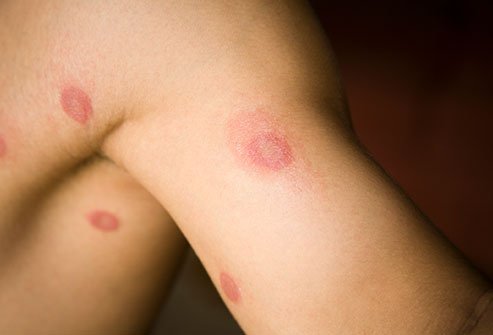Overview of Different Fungal Skin Infections

Fungal skin infection is a disgusting health condition with various symptoms, including red patches and skin irritation. Fungi thrive on the protein keratin, which is highly present in skin, hair, and nails.
Different Types of Fungal Skin Infections
Depending on the type of fungi, fungal skin infections can be divided into different types.
Athlete’s Foot
It is the common fungal infection of the foot that especially appears between your toes and on the side of your foot. It is also called Tinea pedis. It makes affected skin red, itchy, flaky, peeled with white cracks, sores, and blisters. Athlete’s foot commonly takes place in a warm and humid climate and summer.
Those who wear tight socks or shoes walk barefoot on damp or contaminated floors in communal shower facilities and swimming pools are more susceptible to infection. It can be again divided as Moccasin, Vesicular, and Interdigital. Use topical anti-fungal and antibacterial creams after seeing your doctor for the right advice.
You must wash your hands and feet with good soap to prevent it from happening and its further spread. Nail infections: Any part of your nail can get affected by this fungal infection. Also known as Tinea unguium. It doesn’t develop instantly and takes a long time to develop.
Nails appear discolored and become flaky. Swelling in the surrounding tissue can also occur. Generally, infection occurs on toenails rather than fingernails.
Ringworm
There are three main types of ringworm infection depending on the area where fungi infect. The ringworm of the body, the groin, and the scalp is also known as Tinea corporis, Tinea cruris, and Tinea capitis. Any part of the body exposed, such as legs, arms, and face, gets infected with the first type of ringworm. It causes red, circular, and flat sores on the affected area, and sometimes scaly skin can also appear. As it is contagious, direct contact with an already infected person or belongings such as clothes or infected domestic animals can easily spread infection.
Tinea cruris or jock itch usually occurs in wet environments and summer. Causative fungus grows well in the moist and warm areas of the body, such as the inner thighs and genitals. Itchy and red skin, circular edges, and skin cracking are the common signs of ringworm of the groin.
Ringworm of the scalp mostly affects children but can occur at any age. The whole scalp or part of the scalp gets infected with fungus. Symptoms are almost the same as like above two types. Pus-filled areas and bald areas with small black dots can also be observed. If you share a contaminated comb or hat, you are more likely to get an infection.
Few other fungal infections are caused due to yeasts which are given as follows.
Intertrigo
It is caused by the fungus Candida albicans and mainly affects the top layers of your skin. Obese people and those with artificial limbs or braces are more prone to infection. Affected skin area becomes pink or brown, and if it’s very moist, skin starts leaking fluid with a bad odor.
Thrush
It is another infection caused by the same fungus mentioned above, Candida albicans. This fungus is commonly present in the mouth, stomach, skin, and vagina but multiplies only in specific conditions such as illness, diabetes, or pregnancy.
White patches, red marks, itchiness, vaginal thrush, and excess vaginal discharge are common symptoms.
Pityriasis Versicolor
Malassezia is a causative fungus that mainly affects young adults. Scaly patches, itchy and discolored skin – such as pink, red, or brown- occur on the back, upper arms, and torso. So, these are the important types of fungal skin infections, and you must treat them with the right treatment.
Treatment
Coresatin Nonsteroidal Cream is a supporting therapy for fungal infections, which is effective for fungal skin infections.
Trending Health Topics
- ADHD
- Allergies
- Arthritis
- Bipolar Disorder
- Bunions
- Car Accidents
- Chron's Disease
- Common Cold
- COPD
- Depression
- Dry Skin
- Dry throat
- Eczema
- Fungal Infection
- GERD
- HIV/AIDS
- Hypertension
- Irritable Bowel Syndrome (IBS)
- Multiple Sclerosis
- Osteoarthritis
- Psoriasis
- Rheumatoid Arthritis
- Skin Disorders
- strep throat
- Type 2 Diabetes
- Uncategorized